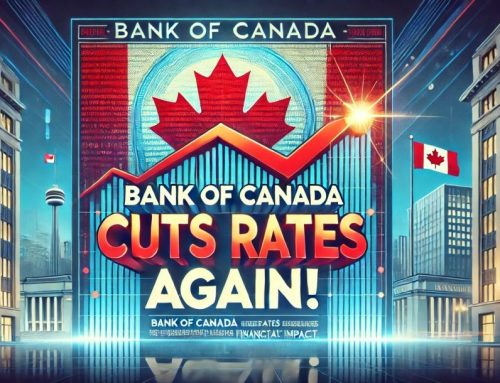It’s hard to believe that we’re almost halfway through the fall season and that Halloween is only a few days away. Time really does fly. While we prepare for the arrival of the witches, ghouls and goblins (referring of course to the candidates running in the US federal election), the Bank of Canada announced this morning that they will be maintaining their overnight rate at 0.25%. This is the rate that lenders use to set their prime rate, which will remain at 2.45%. This is not surprising, and anything else would have been quite the shock.
It’s been widely predicted that the Bank of Canada will not be increasing their overnight rate for at least two years, which is comforting news to anyone in a variable rate mortgage or a HELOC (Home Equity Line of Credit). No increases expected anytime soon, but what about a potential rate drop?
When the BOC moves their overnight rate, it’s always in increments of 0.25%. This means one more downward move would put the rate at 0.00%.
What are the odds of this happening?
It depends on what happens with our economy moving forward. While it’s been steadily growing since the reopening of businesses back in the summer, it’s future is still unclear. COVID-19 cases are on the rise, and potential shutdowns remain a possibility. If our economic situation worsens, then the BOC may be forced to make further cuts, and are not against the idea of moving to negative interest rates if required. This would be an extreme measure, but they’ll do whatever they have to do to protect the economy. This would mean two more drops by the BOC, which would move the overnight rate down to -0.25%. This would be an unprecedented move, but 2020 has become the ‘year of unprecedented events’, so anything is possible. Some central banks have already moved to negative interest rates, such as Japan, Sweden, Denmark and Switzerland, among others.
An overnight rate of -0.25% would mean prime rate would drop to 1.95%. That’s if the banks match the full rate cut. When the BOC cut their overnight rate twice back in 2015, the banks refused to match the full 0.25% cuts and only dropped by 0.15%, both times led by TD. The other banks then followed. Will this happen again? Likely not, but anything is possible.
The Future Of Our Economy
As it stands now, the BOC is expecting to see our economy grow by an average of close to 4% in 2021 and 2022. Considering it dropped approximately 5.5% in 2020, we’re still looking at a few more years before we get to pre-pandemic levels. They key here is that the BOC is expecting our economy to grow, and as long as they’re confident in this path, I wouldn’t expect them to cut their rate further. The future of the pandemic is uncertain however, and therefore so is our economy. As long as this uncertainty remains, both fixed and variable mortgage rates will remain low.








I value the blog article. Really looking forward to read more. Much obliged. Olga Weider Pelagi
I have read so many articles about the blogger lovers but this piece of writing is really a nice post, keep it up. Joy Bud Fulks